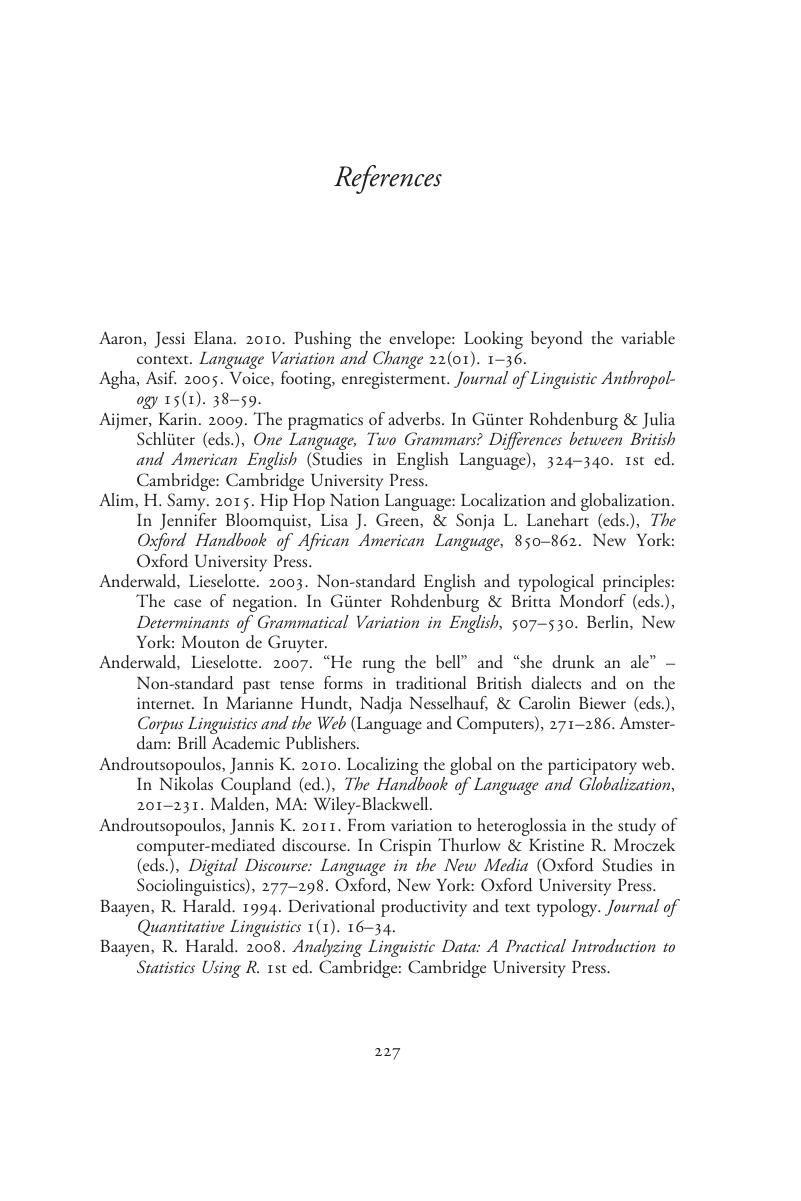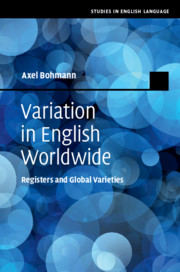Book contents
- Variation in English Worldwide
- Studies in English Language
- Variation in English Worldwide
- Copyright page
- Dedication
- Contents
- Figures
- Tables
- Preface and Acknowledgments
- Abbreviations
- Chapter 1 Introduction
- Chapter 2 The World of English
- Chapter 3 Quantifying Linguistic Variation
- Chapter 4 The Space of Variation in the Present Study
- Chapter 5 General Situational Dimensions of Variation
- Chapter 6 Register-Specific Dimensions
- Chapter 7 Dimensions with Other Patterns of Distribution
- Chapter 8 Discussion: Feature Space and Geographical Space
- Chapter 9 Conclusion
- Book part
- References
- Index
- References
References
Published online by Cambridge University Press: 03 November 2019
- Variation in English Worldwide
- Studies in English Language
- Variation in English Worldwide
- Copyright page
- Dedication
- Contents
- Figures
- Tables
- Preface and Acknowledgments
- Abbreviations
- Chapter 1 Introduction
- Chapter 2 The World of English
- Chapter 3 Quantifying Linguistic Variation
- Chapter 4 The Space of Variation in the Present Study
- Chapter 5 General Situational Dimensions of Variation
- Chapter 6 Register-Specific Dimensions
- Chapter 7 Dimensions with Other Patterns of Distribution
- Chapter 8 Discussion: Feature Space and Geographical Space
- Chapter 9 Conclusion
- Book part
- References
- Index
- References
Summary

- Type
- Chapter
- Information
- Variation in English WorldwideRegisters and Global Varieties, pp. 227 - 248Publisher: Cambridge University PressPrint publication year: 2019

